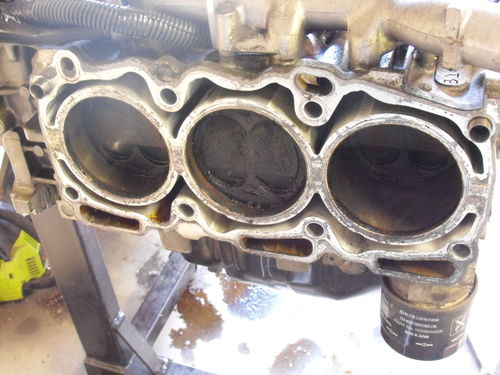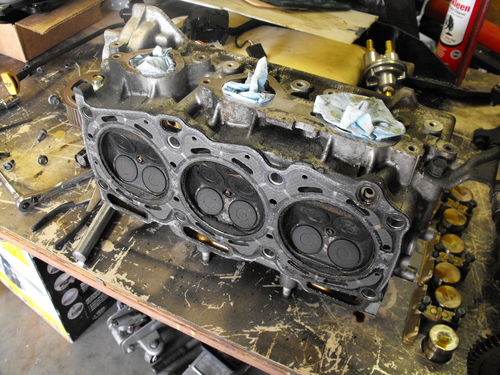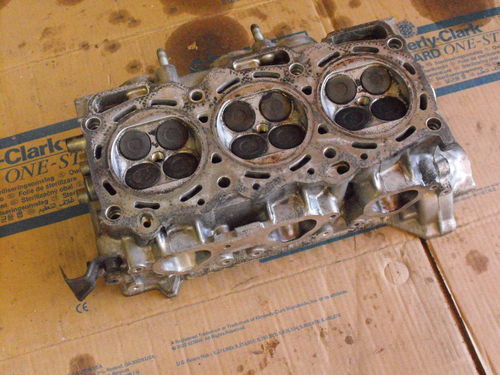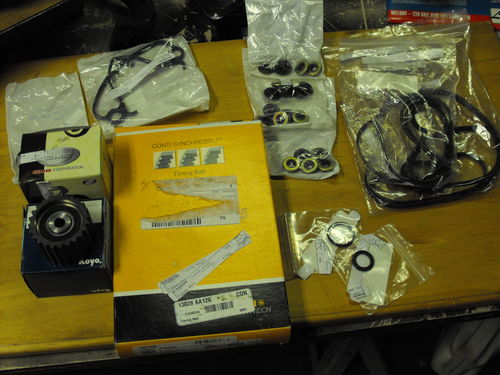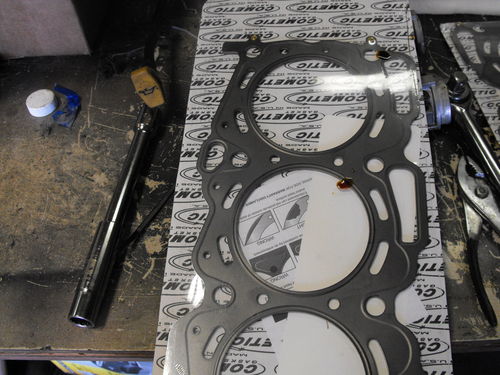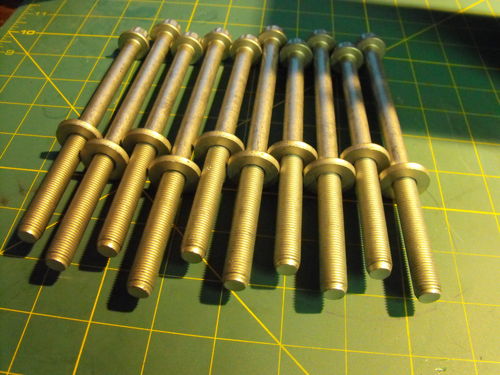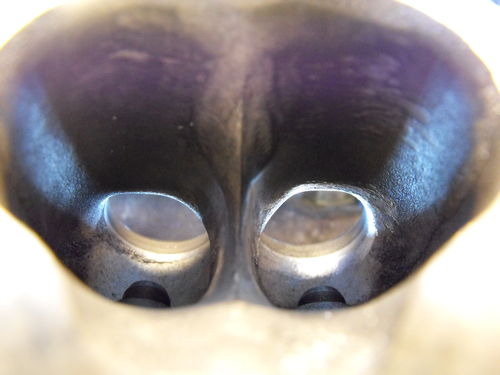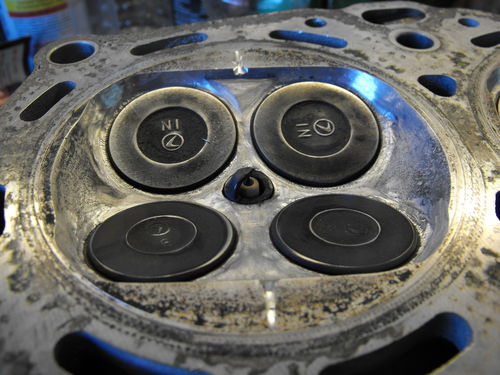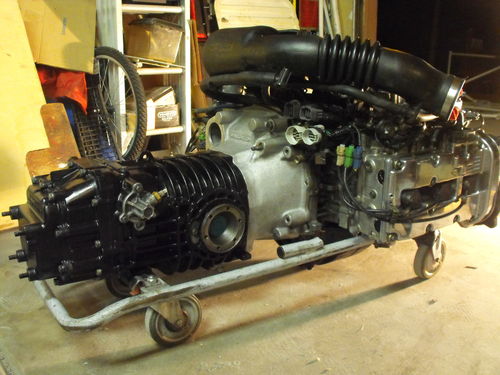07/25/2010 Update:
After putting about 1,000 miles on my nice JDM engine it has been discovered that the piston rings are worn past the wear limit. I have not determined oil consumption as of yet, but the compression tested at only 140 and was within 4 psi across all cylinders. (Manufacturers specs call for 171-206PSI) cannot stress enough the importance of a leak-down test prior to engine installation, even after you purchase one you have “heard” the results for, avoid the extra work and test it yourself!Introduction:
Ever considered purchasing one of those JDM eBay engines but you weren’t exactly sure what you were going to get? This guide is intended to aid in your JDM engine purchase decision, I purchased a 93 Subaru SVX EG33 Engine for around $650 + $180 shipping that has “between 30-60,000 miles.”
When purchasing a JDM engine on eBay there are a couple of special considerations that need to be taken into account. The first thing you’ll need to decide is whether you’re looking for a “swap” or just an “engine”. The significant difference being is that when purchasing just an “engine” (the method I chose) you are only guaranteed the long block, it comes with the manifolds, accessories, and all electrics but it can have any amount of Damage as long as the block / heads underneath it all is in good working order. I only recommend this option if you already have a complete engine you can cannibalize parts off of.
The swap option naturally is obscenely expensive, but with that comes the protection for you engine accessories, the auction will also include an ECU, wiring harness, drive by wire, and immobilizer components (if applicable)
When considering various options always remember to pay attention to shipping. In some instances shipping will only be $100-$200, however there are situations where companies will charge $300-$400 for shipping which at least for me was considered a deal-breaker.
Also remember that when looking at the photo of your potentially new engine there is a good chance that it’s going to be a “stock photo” of some sort. This generally means what you’ll be receiving on your engine will be different then actually pictured. There is no magical answer as to whether there is going to be more or less stuff with your engine vs what was pictured but here is a general idea..
The picture below represents what was originally pictured in my JDM engine’s auction:

So when it arrived to my house it was packaged as a pallet encased in shrink wrap. After 3 minutes of cutting the stuff away this is what was underneath:
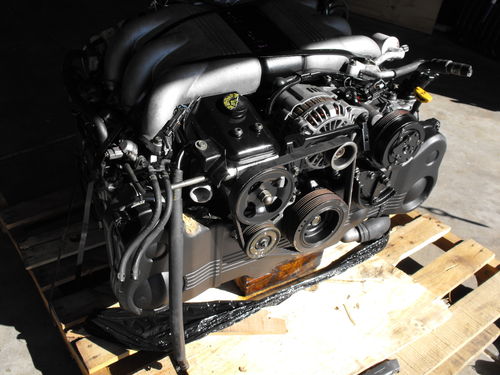
This particular company uses a totally awesome engine cleaning solvent, I don’t think I have seen another used engine this clean! In some ways this makes it harder to identify potential leaks and the previous condition of the motor, but you shouldbe changing all the seals and gaskets anyway 😉
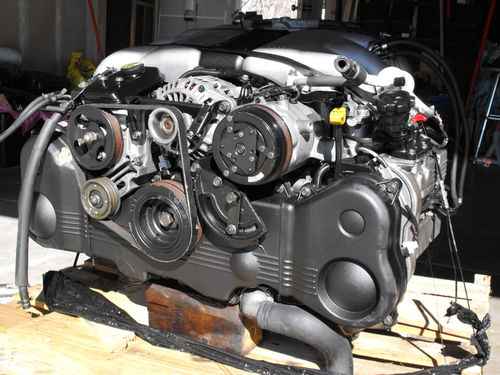
This picture you can see the A/C hoses are even still there! (good for having an on-board air compressor for train horns) They really do remove it junkyard style and mine came complete with just about half of every externally attached hose:

For those who have seen this end of an EG33 and live in the US, you would have noted this piece is cheaply made plastic but everyone else gets metal:
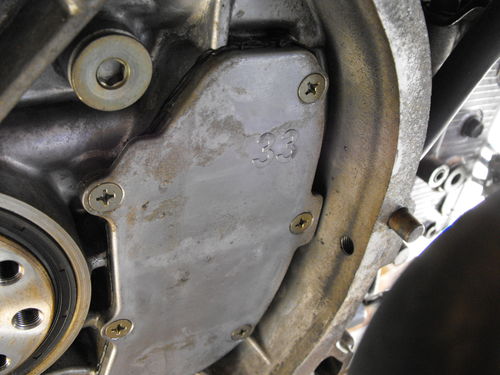
DAMAGE:
So now the bad news, when you engine is carted across the ocean there are going to be damaged parts. Luckily, nothing “vital” was damaged but it’s always a nuisance nonetheless. I had 1 broken injector and 2 broken injector clips:

It looks like something was just shoved up against this side of the engine, it looks like I will have to “re pin” a couple of connectors, this fuel injector was totally demolished:
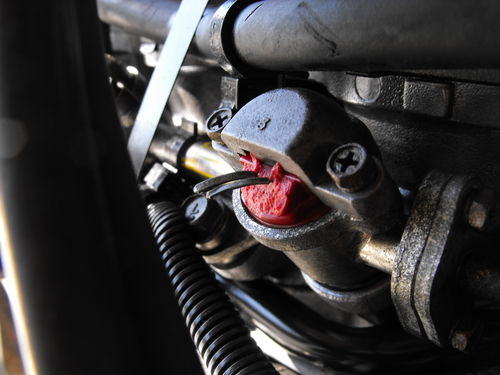
The ecu harness connectors and bracket were folded in rather nicely..
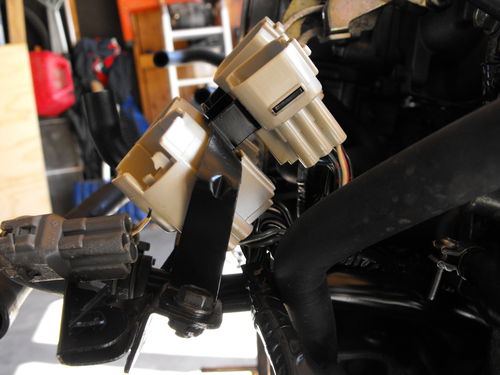
As was the throttle linkage wheels on the throttle body:
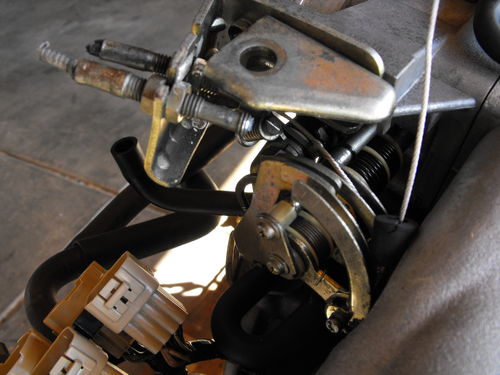
As clean as everything was it came with some JDM dirt:
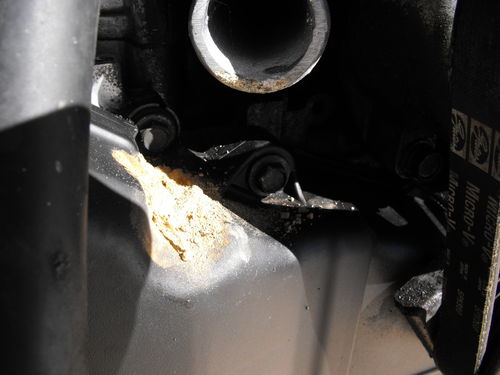
I was overall impressed and pleased with the quality of this engine, it has been an interesting first try at actually purchasing a motor that I haven’t heard run before pulling it. Of course what it looks on the outside is no indication of what the internals will have to offer. This engine came with a genuine Subaru oil filter attached so the chances it was last serviced at a dealership are high. I will be replacing the headgaskets with their metal Cometic brand counterpart.
Its no surprise that you’ll find on the site the guarantee the long block only and NOT any manifolds, sensors, and accessories attached come with absolutely no warranty of any kind. When I started to disassemble the engine it was moderately clean inside, things were a little on the “Dry” side as far as being covered in oil goes but at least it wasn’t incredibly gummed up:
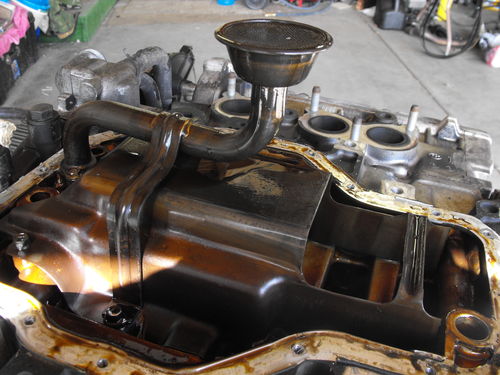
Here is one of the valve covers removed:
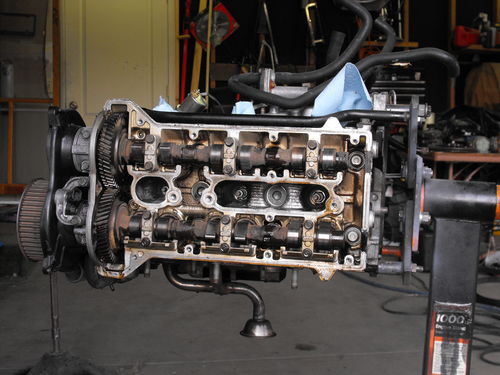
Engine disassembly was kind of disappointing, even though it only has 60K on it the amount of crud built up inside the cylinder tells a story that it may as well have been 100,000 miles put on this engine, the crosshatch pattern on the cylinder walls was OK, but i’m talking the same kind of OK that the 137,000 miles USDM block had on it:
There is quite a bit of Carbon buildup, it was about at this point I started thinking to myself “If you only owned a vehicle for 30 – 60,000 miles how well would you take care of the maintenance?” Probably not pretty good I imagine, unless you’re lucky and got an engine that had a more enthusiastic owner:
When shopping online for your engine that your planning on running the bottom end as/is, DO NOT HESITATE TO ASK FOR LEAK-DOWN TEST RESULTS! YOU NEED TO KNOW! Unless you are completely rebuilding the engine, A simple compression check that they give won’t do it, the compression card that came with my JDM engine was the results of a test where a guy spins the motor over by hand and then writes down the pressures generated. So the engine is cold, not turned over by the starter, and no throttle plate is opened during testing. (well, opening the throttle honestly wont make a bit of difference to someone turning over an engine by hand.)
So after deciding to move forward, I went ahead and cleaned up the heads which came out pretty nice for some brake parts cleaner, purple power, and a pressure washer:
When you purchase a JDM engine, at the very least you’ll want to plan on replacing: Timing Belt, Timing Belt Idlers, Water Pump, Headgasket(s), front main seal, rear main seal, all camshaft seals (Subaru / EG33 you only need the seal where the pulley is you can re-use the black plug), valve stem seals, intake manifold gaskets (lower for EG33 since you remove the manifold assembled), exhaust manifold gaskets, and valve cover gaskets. THESE PARTS LISTED IS THE BARE MINIMUM THAT YOU MUST REPLACE IF THE ENGINE PASSES A LEAKDOWN TEST! The only thing that should really be checked and replaced as needed is the valve guides.
Some people may ask, why head-gaskets? The truth is, head-gaskets used in most engines in factory form are made of the paper-board like material that Felpro gaskets use, NOT multi-layered steel. If you want your engine to last then you need to do it right, and doing right in my book consists of the use of Cometic head-gaskets:
If for any reason you think I left you head-bolts because they were reusable or something, you’re wrong. I replace these with EVERY head-gasket I do so its just always a requirement:
This engine also got a dress up kit that I hand polished, it makes the EG33 really shine:
The heads were also mildly modified, see the “Doogielabs Performance Headprep” (Link to be added) page for a full guide on how I did this. I used the JDM EG33 heads as my example. Here is an example of a stock port (on the left) next to a port that I modified(on the right):
Here is an example of porting done in the combustion chamber, noting in particular the “cloverleaf” pattern:
After all the work was completed the heads were machined appropriately, and the engine was assembled and mated to the new trans ready for installation:
Always remember to do your research, there are instances where a JDM engine puts out LESS power and it’s not always more. In the case of the EG33 they are identical, in the case of the 2JZ the JDM one actually had smaller camshafts and I think even turbos and in turn made less power.
When you get your JDM engine, always take the oil pan off and bash out the bottom with a mallet or a hammer. This may not apply if your oil pan bottom is aluminum, in which case you definitely need to check for cracks. In shipping, your oil pan will get dented in and therefore close the distance between the floor of the oil pan and the bottom of the oil sump. If you have a Nissan SR-20 this is especially important because the sump is slung very low in the pan and will starve the motor of oil after it’s warmed up and in higher R’s. If you buy a JDM engine and receive a receipt you will see this same warning in the warranty information. (at least you should) DO THIS EVEN IF THINGS LOOK OKAY! There could be stuff clogging the oil sump, or there could be a surprise like metal shavings in the bottom of the pan. Save yourself from finding these issues after the engine’s installation.
So whats the conclusion of all of this? Purchasing a JDM engine is a very tempting economical solution to rebuilding your engine outright. However I stress that it’s a gamble at best as to whether you’ll receive an engine that has developed some sort of issue. Because of the stop and go nature of overcrowded Japan an engine with 60,000 miles worth of wear over there is equivalent to 130,000 miles of wear over here. If you ask me in some ways the 130K USDM core I had fared better! Even if the vehicle was serviced at the dealership that doesn’t mean its good to go. Evidence in my case indicated the engine was last serviced at a dealership, and they probably pulled the engine from being worn out in the first place. Choose carefully and be safe!

